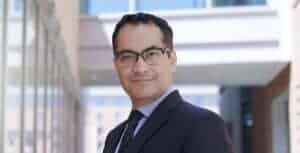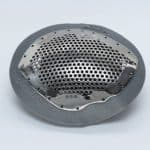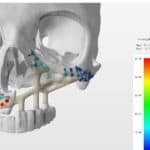
Ali Khademhosseini is currently the CEO and Founding Director at the Terasaki Institute for Biomedical Innovation. Previously, he was a Professor of Bioengineering, Chemical Engineering, and Radiology at the University of California-Los Angeles (UCLA). He joined UCLA as the Levi Knight Chair in November 2017 from Harvard University where he was a Professor at Harvard Medical School (HMS) and faculty at the Harvard-MIT’s Division of Health Sciences and Technology (HST), Brigham and Women’s Hospital (BWH) and as well as associate faculty at the Wyss Institute for Biologically Inspired Engineering. At Harvard University, he directed the Biomaterials Innovation Research Center (BIRC) a leading initiative in making engineered biomedical materials. Dr. Khademhosseini is an Associate Editor for ACS Nano. He served as the Research Highlights editor for Lab on a Chip. He is a fellow of the American Institute of Medical and Biological Engineering (AIMBE), Biomedical Engineering Society (BMES), Royal Society of Chemistry (RSC), Biomaterials Science and Engineering (FBSE), Materials Research Society (MRS), NANOSMAT Society, and American Association for the Advancement of Science (AAAS). He is also the recipient of the Mustafa Prize ($500,000 prize) and is a member of the International Academy of Medical and Biological Engineering, Royal Society of Canada and Canadian Academy of Engineering, and National Academy of Inventors. He is an author on >650 peer-reviewed journal articles, editorials, and review papers, >70 book chapters/edited books, and >40 patents/patent applications. He has been cited >74,000 times and has an H-index of 139. He has made seminal contributions to modifying hydrogels and developing novel biomaterial solutions for addressing pressing problems in healthcare. He has founded 2 companies, Obsidio Medical and Bioray. He received his Ph.D. in bioengineering from MIT (2005), and MASc (2001) and BASc (1999) degrees from the University of Toronto both in chemical engineering. Professor Khademhosseini will be speaking at our upcoming webinar The Art and Sciences of Bioink.
Jenny: When was the first encounter you had with 3D printing? What was that experience like? What were you thinking at that moment?
Ali: When I was in Grad school at MIT and I saw some of Bob Langers’ work on 3D Printing Tissues.
Jenny: What inspired you to start your career in bioprinting/biofabrication?
Ali: I had some interactions with companies that specialized in 3D printing. I was able to get some devices on them and got in some early publications/work.
Jenny: What is your vision on the intersection of 3D Printing and healthcare?
Ali: I envision that 3D printing can create a wide variety of products with a huge impact on healthcare. Such products, in the form of tissues and organs for tissue regeneration and drug testing, will bring a paradigm shift in the fields of personalized prosthetics, implants, and anatomical models.
Jenny: Who inspired you the most along this journey in biofabrication/bioprinting?
Ali: Bob Langer
Jenny: What do you specialize in? What is your passion?
Ali: My research is focused on developing micro- and nano scale biomaterials to control cellular behavior with particular emphasis on developing engineered materials and systems for tissue engineering. In particular, I am passionate about developing various approaches to merge micro fabrication techniques such as 3D bioprinting, photo lithography, and microfluidics with hydrogel biomaterials for directing cell organization and generating complex 3D tissues. I am also developing ‘organ-on-a-chip’ systems that aim to mimic human response to various chemicals in vitro. In addition, my laboratory is developing technologies to control the formation of vascularized tissues with appropriate micro architectures as well as regulating stem cell differentiation within micro engineered systems.
Jenny: What is your vision on the intersection of 3D Printing and healthcare?
Ali: I envision that 3D printing can create a wide variety of products with a huge impact on healthcare. Such products, in the form of tissues and organs for tissue regeneration and drug testing, will bring a paradigm shift in the fields of personalized prosthetics, implants, and anatomical models.
Jenny: What inspired you to do what you do?
Ali: A passion for science and bringing technologies that make a change for the larger good is what inspired me. I have been lucky to have had my education under the shadows of some great scientists who have brought groundbreaking concepts and technologies from bench to bedside that continues to change the lives of millions.
Jenny: What motivates you the most for your work?
Ali: To make an impact.
Jenny: What inspired you to do what you do?
Ali: A passion for science and bringing technologies that make a change for the larger good is what inspired me. I have been lucky to have had my education under the shadows of some great scientists who have brought groundbreaking concepts and technologies from bench to bedside that continue to change the lives of millions.
Jenny: What is the biggest obstacle(s) in your line of work? If you have conquered them, what were your solutions?
Ali: I encounter obstacles all the time and I just try to find different solutions until I solve the problem.
Jenny: What do you specialize in? What is your passion?
Ali: My research is focused on developing micro- and nano scale biomaterials to control cellular behavior with particular emphasis on developing engineered materials and systems for tissue engineering. In particular, I am passionate about developing various approaches to merge micro fabrication techniques such as 3D bioprinting, photo lithography, and microfluidics with hydrogel biomaterials for directing cell organization and generating complex 3D tissues. I am also developing ‘organ-on-a-chip’ systems that aim to mimic the human response to various chemicals in vitro. In addition, my laboratory is developing technologies to control the formation of vascularized tissues with appropriate microarchitectures as well as regulating stem cell differentiation within micro-engineered systems.
Jenny: What do you think is the biggest challenge in 3D bioprinting? What do you think the potential solution is?
Ali: The biggest challenge would be getting things that are functional. The solution would include a better understanding on biology.

Jenny: If you are granted three wishes by a higher being, what would they be?
Ali: More time in a day.
Jenny: What advice would you give to a smart driven college student in the “real world”? What bad advice you heard should they ignore?
Ali: The advice I would give is to get exposed to as many different things as possible. I would tell them to ignore any advice that says to solely focus on their studies – they also need to be aware of other things going on in the world.
Related Links:
3DHEALS2017: Biomaterial and the Future of Medicine
Interview: Adam Jakus, Chief Technology of DimensionInx
3DHEALS2017: Bioprinting as the Future of H3DP
Bioart With Amy Karle: How 3D Printing Connects Art, Science, Humanity



 Jun 20, 2021
Jun 20, 2021 








Comments